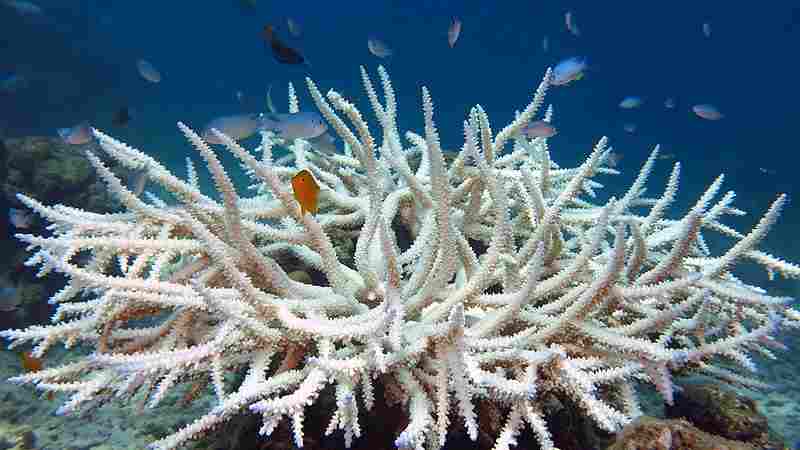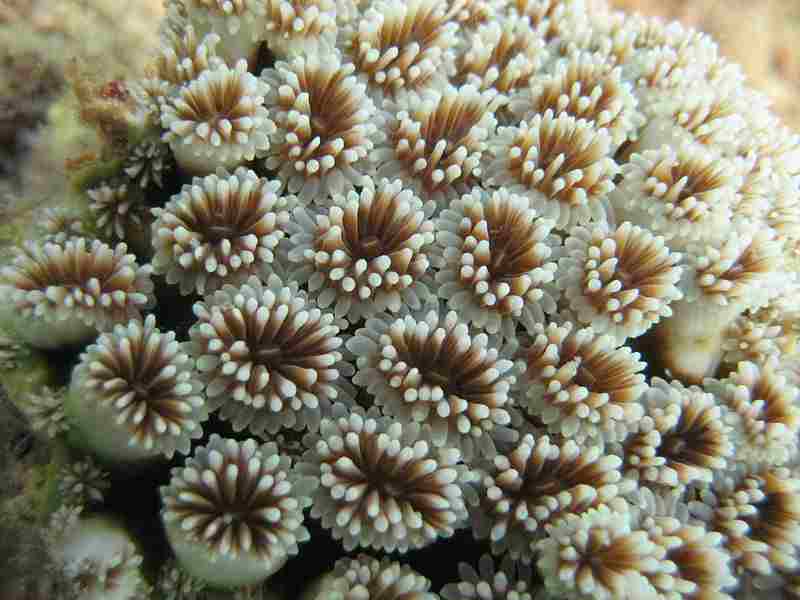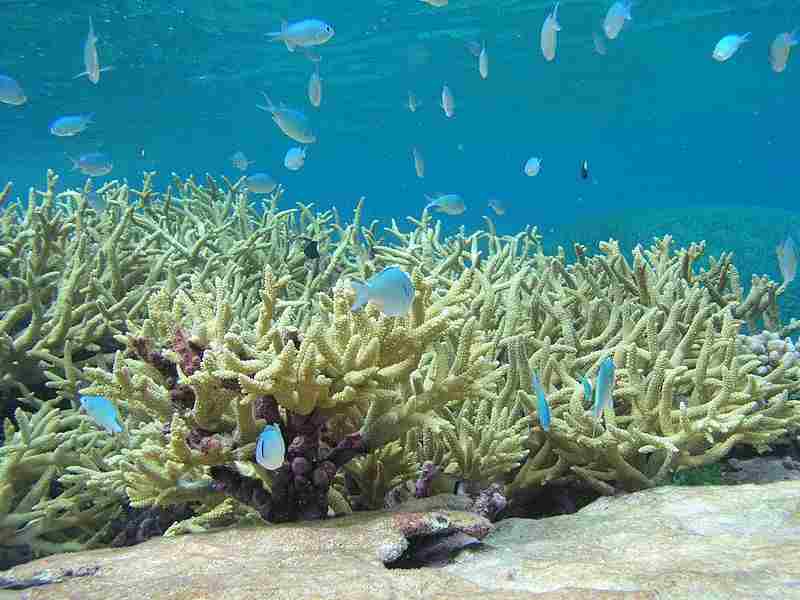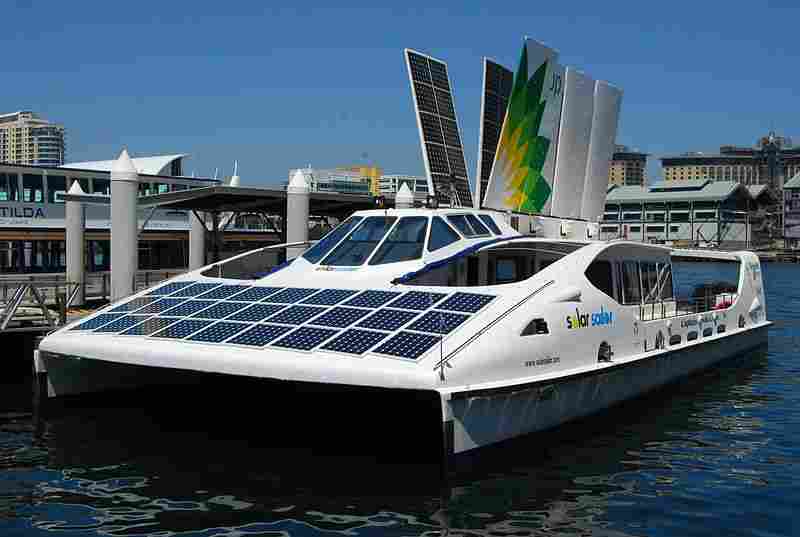11 Coral Bleaching Causes and Preventive Measures Discussed
Coral bleaching causes are; solar irradiance, temperature changes, sedimentation, pollution, extremely low tides, and freshwater influx.
Ways to prevent coral bleaching include; waste recycling, reduction of stormwater runoff, minimal pesticide and fertilizer usage, energy conservation, and sustainable seafood consumption.
This article discusses coral bleaching causes, as well as how to prevent coral bleaching; as follows;
Coral Bleaching Meaning
Coral Bleaching is an ecological phenomenon that occurs when coral reefs lose their vibrant colors and turn white or pale as a result of the expulsion of symbiotic algae called zooxanthellae from the tissues of individual corals.
These algae are important for the survival of coral because they provide the corals with essential nutrients through photosynthetic processes. Coral bleaching typically occurs when coral polyps expel the zooxanthellae in response to stressors such as increased sea temperatures, severe environmental pollution, or sudden changes in water quality.
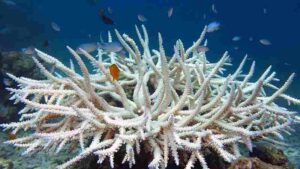
Consequences of coral bleaching include; loss of biodiversity, economic impacts, ecosystem services, and increased vulnerability.
Coral reefs are among the most diverse ecosystems on the planet, and bleaching can lead to the death of coral colonies. This, in turn, affects the various species that rely on the reef for habitat and food.
Coral reefs support fisheries, tourism, and coastal protection, and their decline due to bleaching can have severe economic consequences for communities that depend on them.
Coral reefs provide ecosystem services like coastal protection, water filtration, and carbon sequestration. Bleaching can diminish their ability to provide these services.
Repeated bleaching events can weaken coral reefs, making them more vulnerable to diseases and further bleaching.
-Coral Bleaching Causes
1). Solar Irradiance
Solar irradiance, which is the radiant energy from the sun, is particularly instrumental in its contribution to causing coral bleaching. While it is not the direct cause of bleaching, solar irradiance can exacerbate and contribute to the stress that corals experience, making them more vulnerable to bleaching. Here, an overview of how solar irradiance influences coral bleaching, is provided.
How Solar Radiation Contributes to Coral Bleaching
Contributions of solar irradiance to coral bleaching can be discussed in terms of temperature elevation, ultraviolet (UV) radiation, photoinhibition, excess light energy, synergistic effects, and climate change connection.
Solar irradiance, in the form of sunlight, is responsible for heating the ocean's surface. When corals are exposed to such prolonged and intense solar thermal energy, especially during hot, sunny periods, it can lead to a notable increase in sea surface temperatures. Elevated temperatures stress the corals, and disrupt their symbiotic relationship with zooxanthellae, thereby leading to bleaching.
Solar irradiance includes UV radiation, which can damage the DNA of both corals and their symbiotic algae. UV stress can weaken the ability of corals to retain their zooxanthellae, ultimately leading to bleaching.
Excessive sunlight can cause photoinhibition, which is a process where the photosynthetic machinery of the zooxanthellae becomes impaired. This damage can result in reduced photosynthesis as well as the production of harmful oxygen radicals, causing further stress to the coral host.
Corals have a threshold for the amount of solar energy which they can effectively absorb and utilize for photosynthesis. When solar irradiance far exceeds this threshold, the excess light and heat energy become harmful, disrupting the balance between the energy produced and that which is consumed by the corals and their symbiotic algae.
Solar irradiance often functions in combination with other stressors, such as high temperatures and ocean pollution. The synergy between solar irradiance and these stressors can magnify the impact on corals, making them more susceptible to bleaching.
It is important to note that the increasing intensity and frequency of coral bleaching events, including those that are caused or exacerbated by solar irradiance, are linked to climate change and global warming. Rising global temperatures result in longer and more severe heatwaves, which make corals even more vulnerable to the stressors of solar irradiance and other environmental factors.
To mitigate the impacts of solar irradiance on coral reefs, it is important to address the root causes of climate change by reducing greenhouse gas emissions. Additionally, implementing local conservation measures, such as establishing marine protected areas and promoting sustainable coastal practices, can help to minimize the stress on coral reefs and their symbiotic zooxanthellae, ultimately reducing the frequency of bleaching events.
2). Temperature Changes
Coral bleaching is a complex ecological phenomenon, and one of its primary drivers is temperature change(s), specifically elevated sea temperatures. This section discusses how temperature changes cause coral bleaching.
Role of Temperature Changes in Coral Bleaching
The link between temperature changes and coral bleaching can be explored from perspectives such as disruption of symbiotic relationships, thermal stress, loss of color, nutrient deprivation, reduced energy production, coral mortality, and climatic implications.
As hinted earlier, orals live in a mutualistic relationship with symbiotic algae called zooxanthellae. These algae provide the corals with essential nutrients that are derived through photosynthesis. However, when sea temperatures rise, the corals become thermally stressed, and they expel their zooxanthellae, which leads to bleaching.
Corals are highly sensitive to even minute increases in sea temperatures. When the water becomes too warm, the corals perceive it as a threat and may respond by expelling the zooxanthellae. This stress response is a survival mechanism for the corals, as the algae can become harmful under such high-temperature conditions.
The expulsion of zooxanthellae causes the corals to lose their vibrant colors and become white or pale. This color change is a visual indicator of the termination or disruption of the coral-algae symbiosis.
In the absence of zooxanthellae, the corals lose a significant source of their nutrients, leaving them in a state of nutrient deprivation. This can weaken the corals, and can make them more susceptible to diseases and other stressors.
The loss of zooxanthellae implies a decrease in the energy production through photosynthesis. Corals rely on this bioenergy for growth and reproduction, and the reduced energy levels can limit their recovery and survival.
If the stress persists or worsens, the corals may ultimately die. Repeated bleaching events can lead to significant coral mortality and the decline of entire reef populations/ecosystems.
The main factor behind temperature-induced coral bleaching is climate change. Rising global temperatures, which are primarily driven by the increase in greenhouse gas emissions, lead to higher sea surface temperatures. Extended periods of elevated temperatures, in combination with natural climatic phenomena like El Niño, have led to more frequent and severe coral bleaching events.
Addressing temperature-induced coral bleaching requires global efforts to reduce the rate and volume greenhouse gas emissions, and mitigate climate change. Local conservation measures, such as marine area protection and sustainable coastal development, can also help to reduce stressors on coral reefs, causing them to be more resilient to temperature changes and other environmental issues.
3). Sedimentation
Sedimentation is one of the stressors that can lead to coral bleaching and negatively affect coral reef ecosystems. This section discusses how sedimentation causes coral bleaching.
How Sedimentation Causes Coral Bleaching/Mitigation and Conservation Strategies
Some factors and mechanisms that define the role of sedimentation in coral bleaching are; reduced light penetration; physical damage, siltation stress, nutrient supply disruption; decreased reproductive success, human activities and land use.
Sedimentation entails the deposition of fine particles such as silt, clay, and sand onto coral reefs, which cloud the water and reduce light penetration. Corals depend on the energy provided by photosynthesis of their symbiotic algae (zooxanthellae) to survive and thrive. When sedimentation decreases light intensity levels, it disrupts this process and reduces the corals' access to essential nutrients.
Sediment deposition can also physically impair coral tissues. Sediment particles can settle on corals, smothering them and causing severe abrasions. This physical harm can weaken the corals' health and make them more vulnerable to stress.
Fine sediments can be inhaled or ingested by coral polyps and become lodged in their tissues, causing stress. The corals may respond to this stress by expelling their zooxanthellae, which results in bleaching.
Sedimentation can introduce excess nutrients into the ocean, including nitrogen and phosphorus, which can alter the nutrient balance of the coral-algae symbiosis. An imbalance such as this can lead to coral stress and bleaching.
Also, sedimentation can reduce coral reproductive success by smothering coral eggs and interfering with larval settlement. This can hinder the recovery of coral populations after bleaching events.
Human activities on land in adjacent areas, such as infrastructure installation, deforestation, agriculture, and coastal development, often contribute to increased sediment runoff into the ocean. Poor land use practices, including improper construction, mining, and land clearing, can also exacerbate sedimentation on coral reefs.
To reduce the impact of sedimentation on coral reefs and prevent coral bleaching, conservation efforts should focus on proper land use, reef resilience building, erosion control, sustainable coastal development, monitoring and research. The suggestions are outlined below;
Implementing responsible land use measures to minimize sediment influx into coastal waters.
Creating marine protected areas and establishing regulations to reduce anthropogenic activities near coral reefs.
Implementing erosion control practices, such as vegetative buffers and sediment retention ponds, to prevent severe soil erosion and sediment runoff.
Promoting sustainable coastal development and construction approaches to minimize sedimentation.
Continuously monitoring the vitality of coral reefs and conducting research to better understand the effects of sedimentation and other stressors.
4). Pollution
Pollution, both from land-based and marine sources, is a major stressor that can cause or contribute to coral bleaching. Below is a discussion of how pollution leads to coral bleaching.
Contribution(s) of Pollution to Coral Bleaching/Mitigation and Conservation
Pollution causes coral bleaching through nutrient imbalances, water quality degradation, toxic substance influx, pathogens and diseases, physical damage, climate change interactions, and land-based contaminant inflow.
Excess nutrients from agricultural outlets, municipal sewage discharge, and industrial effluents can enter into coastal waters. Elevated nutrient levels, especially nitrogen and phosphorus, can disrupt the delicate nutrient balance within coral tissues and their symbiotic algae (zooxanthellae). This nutrient imbalance can induce stress in corals and may lead to the expulsion of zooxanthellae, which results in bleaching.
Pollution can also reduce water clarity and quality, which limits the amount of light reaching corals. Insufficient light hampers photosynthesis, as corals rely on photosynthetic products derived from their zooxanthellae to survive. The resulting reduced energy intake can degrade coral health and make them more susceptible to bleaching.
Pollutants like heavy metals, hydrocarbons, pesticides, and other chemicals, can be toxic to corals. These substances can damage coral tissues and impair their ability to retain zooxanthellae, thereby leading to bleaching.
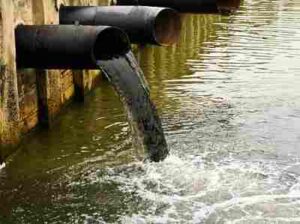
Pollution can lead to introduction of pathogens and diseases to coral reef habitats. The stressed state of corals due to pollution makes them more vulnerable to infections, and disease outbreaks can also result in coral bleaching.
Debris and litter derived from pollution, such as plastics and discarded fishing gear, can physically damage corals. Injured corals are more likely to expel their zooxanthellae, causing bleaching.
Pollution can also interact with other stressors, such as elevated sea temperatures, which are the main drivers of coral bleaching. Pollutants can exacerbate the effects of thermal stress, making corals more susceptible to severe and rapid bleaching hazards.
As earlier stated, contaminants from land-based sources, such as agricultural runoff, urban development, and deforestation, often finds their way into coastal waters, impacting nearby coral reefs.
Marine-based pollution is linked to processes and activities like shipping, oil spills, and improper municipal/industrial waste disposal. These factors can introduce pollutants directly into reef environments.
Mitigation and Conservation
In order to address pollution-related coral bleaching, actions should include; sustainable land management, effective wastewater treatment, marine area protection, education and awareness, analysis and monitoring. The suggestions are outlined as follows;
Implementing responsible land use practices to minimize nutrient runoff and pollution from agriculture, urban development, and industrial activities.
Properly treating and managing wastewater to prevent nutrient pollution from sewage discharge.
Establishing marine protected areas and regulations to reduce marine pollution sources, such as oil spills and littering.
Raising public awareness about the impact of pollution on coral reefs and the need for conservation efforts.
Continuously monitoring water quality, conducting research on pollution's effects, and developing strategies to reduce its impact.
Addressing pollution is an important step toward protecting coral reefs and mitigating coral bleaching, as pollution contributes to the overall degradation of these essential marine ecosystems.
5). Extremely Low Tides
Extremely low tides themselves do not directly cause coral bleaching. Coral bleaching is mainly a result of elevated sea temperatures, pollution, or other stressors that disrupt the symbiotic relationship between corals and their photosynthetic algae (zooxanthellae). However, extremely low tides can indirectly contribute to coral bleaching in various ways, which include temperature and desiccation stress, concentration of pollutants, and physical damage.
When tides recede to extremely low levels, it can lead to exposure of coral reefs to the air and intense solar-infrared radiation, for extended periods. This exposure can cause temperature stress and desiccation, as corals are designed to thrive in underwater terrains. The elevated temperatures and direct sunlight can lead to localized heating and stress on the corals, which can make them more susceptible to bleaching if other stressors are present.
Extremely low tides can also concentrate pollutants and sediments in tide pools or shallow areas. As the water evaporates, the concentration of pollutants and sediment can simultaneously increase, posing an additional stressor to corals. Pollutants can impair the symbiotic relationship between corals and zooxanthellae, potentially leading to bleaching.
Low tides can increase exposure of coral reefs to physical damage. Activities such as walking on or touching corals during low tide, even unintentionally, can cause physical harm to the corals, making them more susceptible to stress and bleaching.
It is important to note that while extremely low tides can contribute to localized stress on corals, they are typically not the primary cause of coral bleaching. Instead, coral bleaching is most commonly linked to factors like elevated sea temperatures, pollution, and other abiotic and biotic factors.
Nonetheless, mitigating human-induced stressors and protecting coral reefs through responsible coastal practices and marine conservation efforts remains important for the long-term vitality of these ecosystems.
6). Freshwater Influx
Freshwater influx, which occurs when large amounts of freshwater are introduced into marine environments, can contribute significantly to coral bleaching. While corals can tolerate some level of salinity fluctuation, excessive freshwater influx sharply disrupts the physicochemical balance of their environment, leading to stress and potential bleaching. Here, we discuss how freshwater influx causes coral bleaching.
Relational Factors between Freshwater Influx and Coral Bleaching
Freshwater influx is linked to coral bleaching through various phenomena, such as; osmotic stress, temperature fluctuation, reduced photosynthesis, nutrient imbalance, disease spread, human activities and climate change.
Corals have a specific salinity range which is optimal for their survival. When freshwater influx dilutes the seawater, corals usually face osmotic stress. The influx of low-salinity water disturbs the balance of ions within coral tissues, and affects their cellular functions. This osmotic stress weakens the corals, so that they become more susceptible to bleaching.
Freshwater influx can also lead to temperature fluctuations within the reef environment. Cold freshwater entering into warmer marine water bodies can lower the overall temperature. Corals are ectothermic organisms, meaning their metabolism relies on external temperatures. Rapid and drastic temperature changes, especially cooling, can stress these corals, potentially triggering bleaching.
Excessive freshwater can carry particulates that may cloud the water, reducing light penetration. Corals rely on photosynthesis by their symbiotic algae for nutrients and energy. Less sunlight means reduced photosynthesis, which leads to energy deprivation and weakening of the corals. This energy deficit can make corals more susceptible to bleaching.
Freshwater influx often transports nutrients from land, including nitrogen, potassium and phosphorus. While these nutrients are essential for coral growth, an imbalance due to excessive influx can alter the symbiotic relationship between corals and their zooxanthellae. This disruption can in turn lead to stress and eventual bleaching.
Freshwater influx can carry chemical pollutants and pathogens from land into coral reef ecosystems. Pathogens, along with stress from altered salinity and temperature, can lead to coral diseases, which make the corals more vulnerable to bleaching.
Human activities such as deforestation, un-sustainable agriculture, and urban development can increase freshwater influx into coastal waters. Additionally, climate change can exacerbate extreme weather events that lead to increased freshwater runoff from heavy rainfall, tropical storms, or melting ice, all of which contribute to the stress on coral reefs.
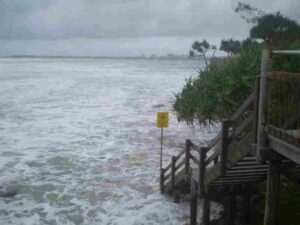
Mitigation and Conservation
Mitigating freshwater influx-related coral bleaching involves measures and practices like; conservation of watersheds, sustainable land use, climate change mitigation, and coral reef protection.
Protecting and conserving watersheds can reduce sediment and pollutant runoff into coastal waters, minimizing stress on corals.
Implementing sustainable land use practices to reduce soil erosion and runoff can prevent excessive freshwater influx into marine environments.
Addressing climate change and its associated impacts, such as extreme weather events and rising sea levels, can help reduce freshwater influx stress on coral reefs.
Establishing marine protected areas and enforcing regulations to minimize human activities near coral reefs can reduce the impact of freshwater influx on these ecosystems.
By addressing the factors leading to freshwater influx and implementing conservation strategies, we can mitigate its impact on coral reefs, thereby fostering their resilience and reducing the risk of bleaching events.
-How to Prevent Coral Bleaching
Ways to prevent coral bleaching include; waste recycling, reduction of stormwater runoff, minimal pesticide and fertilizer usage, energy conservation, and sustainable seafood consumption.
1). Waste Recycling
Waste recycling can indirectly help in the prevention of coral bleaching by reducing pollution and minimizing the influence of stressors on coral reefs. While recycling itself does not have a direct impact on coral reefs, it contributes to a cleaner environment and a reduction in some of the factors that lead to bleaching. Below is a discussion of how waste recycling plays a part in preventing coral bleaching.
Role of Waste Recycling in the Prevention of Coral Bleaching
Factors that highlight the link between waste recycling and coral bleaching prevention are; reduction in marine debris, optimal disposal of hazardous waste, reduced water pollution, effective energy conservation, and resource management.
Recycling helps to reduce the production of single-use plastics, which are a major component of marine debris. Plastics take a long time to break down in the environment and can physically harm coral reefs when they come into contact with them. By recycling and reducing plastic waste, there is less chance of these materials entering the marine environment and damaging corals.
Also, recycling includes the responsible disposal of hazardous materials, which can include batteries, electronics, and industrial chemicals. These substances can be harmful to coral reefs if they leach into the surrounding waters. By recycling and disposing of hazardous waste properly, the risk of such pollutants entering the ocean is minimized.
As implied so far, waste recycling can directly reduce water pollution. The proper disposal of recyclables ensures that harmful chemicals, heavy metals, and other pollutants do not find their way into stormwater runoff, which can flow into coastal waters and damage coral reefs.
Recycling conserves energy compared to continuous manufacturing of products from raw materials. Reduced energy consumption contributes to lower greenhouse gas emissions and mitigates the rate and risk of climate change, being itself one of the main drivers of coral bleaching.
Lastly, recycling reduces the demand for raw materials, which can help to protect natural ecosystems, including those that serve as watersheds for coastal areas. This, in turn, supports cleaner and healthier coastal environments, which are important for the longterm productivity of coral reefs.
While waste recycling has indirect benefits for coral reefs by reducing pollution and greenhouse gas emissions, it is essential to recognize that this measure is just one piece of a larger conservation effort.
To directly prevent coral bleaching and protect these ecosystems, it is critical to address other factors such as climate change, pollution, and sustainable coastal development through implementation of comprehensive conservation strategies. Recycling, along with responsible waste management practices, should be part of a broader approach to safeguarding coral reefs and the marine environment.
2). Reduction of Stormwater Runoff
Reducing stormwater runoff is an effective strategy for preventing coral bleaching and protecting the vitality of coral reefs.
Stormwater runoff is the flow of water, which often carries dissolved pollutants and particulates, from urban and adjacent coastal areas into the ocean during rainfall events. Below is a discussion of how the reduction of stormwater runoff helps prevent coral bleaching.
Stormwater Reduction as a Way to Prevent Coral Bleaching
Reducing stormwater runoff can help prevent coral bleaching, through reduced pollution, improved water quality, minimized sedimentation, protection of coastal areas, and improved climate change resilience.
As stated earlier in this article, stormwater runoff can carry a variety of pollutants from urban areas into coastal waters, which include heavy metals, industrial chemicals, petroleum products, fertilizers, pesticides, plastics, and sediment.
These pollutants can exert a harmful effect on coral reefs by disrupting the symbiotic relationship between corals and their zooxanthellae, leading to stress and potential bleaching. By reducing stormwater runoff, there is less pollution affecting the marine environment, which in turn protects the health of corals.
Stormwater runoff can introduce excess nutrients, especially nitrogen and phosphorus, into the ocean. Excessively high nutrient levels can lead to harmful algal blooms that obstruct sunlight, consume oxygen, and outcompete coral reefs for space. By reducing runoff, the nutrient load in coastal waters is decreased, thereby promoting healthier water quality for corals to thrive.
Also, stormwater runoff can transport sediments from construction sites, roads, and eroded land into the ocean. Sediments can suffocate coral reefs, reducing light penetration and harming the corals. By implementing measures to reduce runoff, such as vegetative buffers and sediment retention ponds, sedimentation on coral reefs can be effectively minimized.

Reduction of stormwater runoff is not only beneficial for coral reefs, but also for other coastal ecosystems, such as seagrass beds, kelp forests and mangrove forests, which serve as vital nurseries and habitable environments for marine life. Protecting these adjacent ecosystems indirectly supports the overall productivity and ecologic resilience of coral reefs.
Healthy coral reefs are more resilient to the effects of climate change, which include rising sea temperatures and ocean acidification. Reducing stressors such as pollution from stormwater runoff, helps coral reefs to better withstand the main cause of coral bleaching, which is elevated sea temperatures.
An Outline of Mitigation Strategies for Coral Bleaching by Sediment-Inducd Degradation
To reduce stormwater runoff and its impact on coral reefs, mitigation strategies include; low-impact development (LID), vegetative buffers, erosion control, regulations and enforcement. Below is a set of guidelines that reiterates these strategies;
Implementing LID practices in urban and coastal areas, such as the use of green roofs, permeable pavement, and rain gardens, helps to capture and treat stormwater before it reaches the ocean.
Planting vegetation along the coastline, or in areas with high runoff rates helps in filtration of stormwater and reduces the transport of soluble pollutants and sediments into the ocean.
Implementing erosion control measures, such as installation of silt fences and sediment basins, can minimize soil erosion and sediment runoff into coastal waters.
Enforcing regulations that entirely limit the discharge of pollutants and runoff from construction sites, industrial facilities, and urban municipalities, is an essential step for preventing harmful stormwater runoff.
Reducing stormwater runoff is vital in coral reef conservation, and in mitigating coral bleaching. It helps to create a cleaner and healthier marine environment, thereby enabling coral reefs to withstand various stressors and thrive.
3). Minimal Pesticide and Fertilizer Usage
Minimal pesticide and fertilizer usage is a key component of coral reef conservation and has a significant effect toward preventing coral bleaching.
Pesticides and excess fertilizers can lead to water pollution, acute nutrient imbalance, and harmful algal blooms that may stress coral reefs. Below is a discussion showing how minimal pesticide and fertilizer usage contributes to the prevention of coral bleaching.
How Minimizing the Use of Pesticides and Fertilizers can Help Prevent Coral Bleaching
With minimal use of pesticides and fertilizers; coral bleaching rates are reduced, owing to lower nutrient influx rates, decreased algal blooms, prevention of pesticide contamination, healthy symbiosis, and increased climate change resilience.
Pesticides and fertilizers, when used excessively or inappropriately, can wash into coastal waters through surface runoff. These nutrients, which include potassium; phosphorus and nitrogen, can cause nutrient pollution, which disrupts the physicochemical balance in coral reef ecosystems.
Excessive nutrients promote the growth of harmful algae, which can compete intensely with corals for space and sunlight, which ultimately leads to stress and bleaching.
As already mentioned before, fertilizer runoff can stimulate the growth of harmful algae, including macroalgae and phytoplankton. When these algae proliferate, they can cover coral reefs, reduce light penetration, and compete with the corals for essential resources. Minimizing fertilizer usage therefore helps curb algal blooms and promotes healthier water quality as well as nutrient and light accessibility for corals.
Pesticides utilized in agriculture, landscaping, and pest control can subsequently find their way into coastal waters. These chemicals can be toxic to corals, so that their presence facilitates physicochemical stress and potential bleaching. Reduced pesticide usage helps to protect coral reefs from the harmful effects of toxic chemical contamination.
Corals rely on a delicate balance of nutrients within their tissues to maintain a healthy and functional symbiotic relationship with zooxanthellae; the photosynthetic algae that provide them with essential nutrients. Excessive minerals from pesticides and fertilizers can disrupt this balance, making corals more vulnerable to bleaching and other degrading effects.
Healthy coral reefs are better equipped to withstand the main drivers of coral bleaching, such as rising sea temperatures and ocean acidification. By reducing stressors like nutrient pollution, corals can be more resilient to the effects of these causative factors.
Mitigation Strategies for Coral Bleaching by Pesticide and Fertilizer Contamination
In order to minimize pesticide and fertilizer usage and protect coral reefs, best management practices (BMPs), buffer zone establishment, education, outreach and regulations are all applicable strategies. They are elaborated further below;
Implement BMPs in agriculture and landscaping to reduce runoff and the use of pesticides and fertilizers. These practices include precision application, optimal timing, and selecting alternative, environmentally friendly methods.
Establish buffer zones between agricultural, urban or industrial areas and coral reefs to filter runoff before it reaches the ocean.
Raise awareness about the impact of pesticide and fertilizer usage on coral reefs and promote responsible practices among the community.
Enforce regulations that limit the use of harmful pesticides as well as excessive fertilizer application in coastal areas.
By minimizing pesticide and fertilizer usage, we can protect coral reefs from the harmful effects of nutrient pollution and thereby promote their long-term resilience. This, in turn, helps to prevent coral bleaching and ensures the survival of these vital marine ecosystems.
4). Energy Conservation
Energy conservation, specifically in the context of reducing greenhouse gas emissions and mitigating climate change, can be crucial in the prevention of coral bleaching. As stated severally so far, coral bleaching is mainly driven by rising sea temperatures and the associated stress on coral reefs. Here, the discussion shows how energy conservation contributes to coral reef protection.
Contributions of Energy Conservation to Preventing Coral Bleaching
Ways in which coral bleaching can be prevented through energy conservation include; mitigation of climate change, temperature regulation, reduction in ocean acidification, ecosystem resilience boosting, establishment of marine protected areas (MPAs), and community engagement.
The burning of fossil fuels for energy production is a major contributor to the emission of greenhouse gases, which trap heat in the atmosphere and lead to global warming. Energy conservation efforts, such as reducing energy consumption and transitioning to cleaner energy sources like renewables, can help immensely to mitigate climate change. By lowering the rate of temperature increase in the oceans, energy conservation directly reduces the stress on coral reefs.

Sustainable energy practices can also help to regulate local temperatures. For example, shading techniques and cool roofs in coastal developments can reduce urban heat islands, thereby preventing localized temperature increases that can exert thermal stress coral reefs.
In addition to warming oceans, carbon dioxide emissions from energy production are a major cause of ocean acidification. Excess CO2 dissolves in seawater, forming carbonic acid which makes the ocean more acidic. Coral reefs are vulnerable to the effects of acidification, as it weakens their ability to build calcium carbonate skeletons. Energy conservation efforts that reduce CO2 emissions are helpful for protecting coral reefs from the adverse impacts of ocean acidification.
Energy conservation helps to build the resilience of coral reef ecosystems. Reduced greenhouse gas emissions lead to a slower rate of environmental change, and allows coral reefs more time to adapt to gradually changing conditions. This enhanced resilience enables reefs to better withstand acute stressors, such as disease outbreaks and short-term temperature anomalies, which under other circumstances can lead to bleaching events.
Energy conservation initiatives often support the establishment and enforcement of marine protected areas that limit human activities in sensitive coral reef regions. MPAs can help to reduce stress exerted on coral reefs from shipping, coastal development, and marine pollution associated with energy production.
Lastly, energy conservation efforts frequently involve community and stakeholder engagement. By raising awareness about the impact of climate change and the importance of energy conservation, these initiatives promote a sense of shared responsibility for coral reef protection.
5). Sustainable Seafood Consumption
Sustainable seafood consumption is an important part of coral reef conservation as it can indirectly help to prevent coral bleaching and support the overall vitality of marine ecosystems. Below is an elaborate discussion of how sustainable seafood consumption contributes to coral reef protection.
How Sustainable Seafood Consumption Contributes to Coral Reef Protection
Aspects and outcomes of sustainable seafood consumption that help prevent coral bleaching include; reduction of overfishing, protection of coral reef fish species, economic incentives for conservation, ecosystem resilience building, marine area protection, community engagement and education.
Practices linked to sustainable seafood consumption, promote responsible fishing that avoids overfishing and the resultant resource depletion (of fish populations). Overfishing can disrupt the equilibrium of reef ecosystems by removing key herbivores that help to regulate algae growth on coral reefs. Excessively grown algal communities can shade and compete with corals, contributing to stress and bleaching. By reducing overfishing, sustainable seafood consumption helps to maintain the ecological balance of coral reefs.
Also, sustainable seafood choices prioritize the consumption of seafood species that are not closely associated with coral reefs and that are not a definitive part of the reef food chain. This reduces the pressure on fish species that serve important roles in coral reef ecosystems. Preserving these species helps to ensure the overall productivity and biodiversity of coral reefs.
Sustainable seafood practices provide economic incentives for communities and industries to engage in coral reef conservation. By supporting fisheries that follow sustainable practices, consumers contribute to the long-term vitality as well as resilience, of coral reefs.
Protecting the broader marine environment is an aim of sustainable seafood management. By supporting healthy and well-managed fisheries, sustainable seafood consumption indirectly enhances the resilience of coral reef ecosystems. A balanced and intact marine ecosystem is better positioned to withstand stressors, such as physicochemical changes and disease outbreaks, which can lead to coral bleaching.
Sustainable seafood initiatives often align with the establishment of marine protected areas for the purpose of limiting fishing activities in the most sensitive coral reef regions. MPAs help to reduce the impact of fishing-related stressors on coral reefs, thereby promoting their protection and recovery.
Lastly, sustainable seafood initiatives often involve community and stakeholder engagement. By raising awareness about the importance of coral reef protection, these initiatives foster a sense of shared responsibility for coral reef conservation among consumers.
Conclusion
Coral bleaching causes include;
1. Solar Irradiance
2. Temperature Changes
3. Sedimentation
4. Pollution
5. Extremely Low Tides
6. Freshwater Influx
Ways to prevent coral bleaching are;
1. Waste Recycling
2. Reduction of Stormwater Runoff
3. Minimal Pesticide and Fertilizer Usage
4. Energy Conservation
5. Sustainable Seafood Consumption
